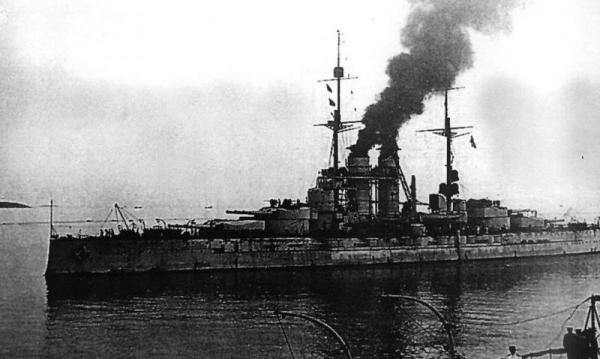
Hungarian Navy? Hungarian admirals, battleships and cruisers? Today, such concepts seem completely absurd. Hungary sits in the heart of Europe, several hundred kilometres from the nearest sea.
However, this was not always the case.
After 1866, the Habsburg monarchy took on a new form and transformed into the Austro-Hungarian Empire. The Kingdom of Hungary functioned within the framework of the dualist state of the Austro-Hungarian Monarchy, enjoying considerable autonomy. Hungary was given access to the Adriatic Sea, its own ports and a say on the Empire’s maritime policy. At the start of the 20th century, the naval arms race intensified with the entry into service of the British ship HMS Dreadnought, which marked the beginning of a new era in the construction of warships. The ambition of nations aspiring to the role of maritime powers was to have as many dreadnought battleships as possible under their flags.
The Austro-Hungarian fleet operated in the Adriatic Sea, with limited access to the Mediterranean through the Strait of Otranto. Capitals of various powers, including Vienna, made the decision to start the construction of similar vessels. The class of four dreadnought battleships, the only ones built for the Austro-Hungarian Navy, is known as the Tegetthoff class or the Viribus Unitis class from the name of the first dreadnought launched by the Empire. “Viribus Unitis” was the personal motto of Emperor Franz Joseph I and it referred to the construction of the new vessels as joint work of the constituent parts of Austro-Hungarian Empire.
Hungary was tasked with building its own dreadnought as part of the Tegetthoff class. The ship was named after Hungary’s patron saint, King Saint Stephen – Szent István. She was built at the Ganz Danubius shipyard in Rijeka. This was where the first problems came to the fore, as the shipyard in Rijeka had previously built only smaller vessels, including renowned torpedo boats, but it did not have the experience or technical facilities to build large battleships. As a result, Szent István entered service two years after the other battleships of the Viribus Unitis class, and featured slightly different design solutions.

„Szent István” in 1915 escorted by torpedoboat
Szent István was commissioned into the Austro-Hungarian Navy in 1915, after the outbreak of World War I. Built using innovative solutions, she was designed to displace 21,000 tonnes. The vessel was driven by steam turbines powered by coal-fired boilers. Theoretically, Szent István was designed to achieve a maximum speed of 21 knots, but in practice it proved impossible to accelerate to such a speed without overheating the turbines. She could steam for 4,500 nautical miles at a speed of 10 knots, which was not exceedingly impressive; however, the dreadnought was designed for short distances across the Mediterranean Sea, similarly to the entire Habsburg fleet. All Viribus Unitis battleships were heavily armed with a main battery of twelve 305 mm guns mounted in triple turrets. Turret 2 and 3 functioned as a superfiring pair, which made it possible to use the whole main artillery to fire to either side of the ship. The armament also consisted of medium and small-calibre guns and torpedo tubes. Szent István was protected with Krupp armour. The weak point of all Viribus Unitis vessels was their high susceptibility to underwater explosions – sea mines and torpedoes. The battleship’s crew consisted of 38 officers and 1060 sailors, including many Hungarians.
For the most part of its maritime service, Szent István was docked at the naval base in Pula. The Austro-Hungarian Navy, locked in the Adriatic, did not participate in any special activity if one does not count a few expeditions linked with opening fire on the coast of Montenegro and the vicinity of the Italian Ancona. It was only after Admiral Miklós Horthy took over the command of the fleet that a chance for greater maritime activity presented itself. The Hungarian admiral decided to show initiative and break the Allied naval blockade of the Strait of Otranto.
The attack on the Otranto Barrage began on 8 June 1918. However, Admiral Horthy’s battleships were spotted and attacked by Italian torpedo armed vessels on 10 June. Two torpedoes fired from the MAS-15 motorboat hit the side of Szent István at 03:30 am. Her sister ship SMS Tegetthoff attempted to take Szent István in tow, as initially it seemed that the battleship could have been saved. However, her design flaws became apparent in the next two hours. The battleship had a weak torpedo bulkhead, so the explosions caused significant damage to its internal structure. Water continued to flood subsequent insufficiently isolated compartments, rendering the pumps ineffective. Szent István quickly lost stability – it turned out that its displacement was insufficient and its centre of gravity was too high. She capsized after 6 am, with a death toll of 89 crew members.

Last minutes of torpedoed battleship
These were the final hours of the first and last Hungarian dreadnought. As a result of the Treaty of Trianon, Hungary lost its access to the sea, and although an admiral was in charge of the state for a number of years, its navy and ships had to be consigned to history.
Marcin Bąk
Sources:
https://www.smartage.pl/austro-wegierski-pancernik-sms-szent-istvan/
